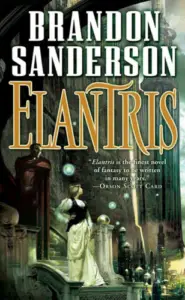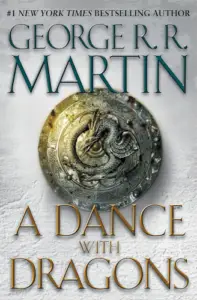The Silmarillion
Book Author: J. R. R. Tolkien
Summary reviewed by:
Terrence Timmons
Terrence Timmons
Analyst
Bachelor of Arts (BA), University Of California, Santa Barbara 2019
With over 4 years of experience as an analyst. Terrence Timmons is committed to analyzing summaries without compromising on quality.
The Silmarillion: Summary
"Embark upon a voyage to Middle-earth, where the foundations of its destiny are forged." The Silmarillion by J.R.R. Tolkien, serves as the prelude to his famous works, The Hobbit and The Lord of the Rings. Set in the mythical world of Middle-earth, this collection of mythopoeic stories delves deep into its creation and the age-long struggles between its inhabitants.
At the heart of the narrative is the creation of Middle-earth itself, envisioned by the supreme deity Eru Ilúvatar and shaped by his subordinate beings, the Valar, each contributing to the formation of the land's landscapes and laws. However, peace is a fleeting season in this realm. The central plot revolves around the Silmarils – three magnificent jewels crafted by Fëanor, the most gifted of the Elven smiths. These gems, imbued with the light of the Two Trees of Valinor, become the envy of both mortals and immortals alike.
The pursuit of these precious stones brings about wars and treachery. Key among the tales is the rebellion of Fëanor and his kin against the gods, leading to their exile from the bliss of Valinor and their subsequent doom. The narrative also explores the sagas of heroes such as Beren and Lúthien, their love transcending the bounds of mortal and immortal realms, and the tragic tale of Túrin Turambar, cursed to a fate of sorrow and strife.
Through these interwoven fables, Tolkien reveals the ancient history that shapes the events known to readers from his later works. The power struggles, heroic deeds, and moral lessons therein are precursor to the adventures in The Hobbit and The Lord of the Rings. Readers looking to fully understand the depth and breadth of Tolkien's universe will find The Silmarillion indispensable.
Despite its complex genealogies and elaborate linguistic style, the book offers profound insights into themes of creation, corruption, and redemption, all while showcasing Tolkien's unparalleled ability to conjure a world that feels both expansive and intensely detailed.
Spoilers (watch a short ad to reveal spoilers)
The Silmarillion: Genres
Fiction
High Fantasy
Mythopoeia
Epic Fantasy
Creation Myth
Heroic Romance
The Silmarillion: Main Characters
Fëanor: The most talented of the Elven smiths, his creation of the Silmarils, jewels that hold the light of the Two Trees, sets much of the plot in motion. His intense pride and fierce possessiveness lead to tragic consequences.
Beren and Lúthien: A mortal man and an immortal Elf-maiden whose love defies the bounds of their respective lives. Lúthien’s sacrifice to descend into the realm of death for Beren’s sake showcases her values of love and sacrifice.
Túrin Turambar: A tragic hero marked by a personal doom, his life is one of great valor but also profound loss. His struggle against fate and his eventual downfall illustrate the theme of destiny and human frailty.
Morgoth (Melkor): The first Dark Lord, whose lust for power and dominion over others instigates much of the conflict in the book. His tyranny is evident in his relentless pursuit of the Silmarils and his oppression of Middle-earth.
Galadriel: An Elven princess renowned for her wisdom and power, Galadriel’s enduring spirit and leadership are crucial in the later ages. Her commitment to preserving the light and knowledge of the Elves underscores her value of foresight and preservation.
The Silmarillion: Themes
Creation and Subcreation: The book begins with the Ainulindalë, the creation myth where the world is formed through divine music. This theme explores the act of creation, both divine and mortal, as seen in the crafting of the Silmarils and the shaping of Middle-earth.
The Corruption of Power: The Silmarils engender envy and greed, leading to wars and the moral downfall of characters. Morgoth’s theft of the jewels and Fëanor’s oath highlight how the pursuit of power can lead to ruin.
Fate and Free Will: Many characters confront their predestined paths, such as Túrin, whose tragic fate is foretold yet still struggles against it. This theme questions the balance between destiny and personal choice.
The Passing of the Old Ages: The inevitable decline and loss of the ancient worlds and their wisdom is a poignant theme. The submergence of Beleriand signifies the end of an epoch and the beginning of the dominion of Men.
The Silmarillion: What You Need to Know
(Contains Spoilers: Perfect for readers seeking a quick review.)
The Silmarillion recounts the mythology and history of Middle-earth's creation and the First Age, culminating in the War of Wrath against Morgoth. It starts with the creation narrative, where Eru Ilúvatar creates the Ainur, and through them, the world itself is shaped. The narrative then shifts to the deeper conflicts that arise within this created world.
Key plot points include:
The Crafting of the Silmarils: Fëanor creates the Silmarils, which encapsulate the sacred light of the Two Trees of Valinor. His refusal to relinquish them, even to heal the Trees, sets the stage for much of the conflict.
The Rebellion of the Noldor: Following Morgoth's theft of the Silmarils and murder of his father, Fëanor leads many Elves in rebellion against the Valar, culminating in the Kinslaying at Alqualondë and his tragic oath, binding his family to a dark fate.
The Arrival of Men: Men appear in Middle-earth, and their fates become entwined with the Elves and their struggles. The Edain, the noblest of Men, ally with the Elves against Morgoth.
The Tales of Beren and Lúthien: Their quest to retrieve a Silmaril from Morgoth's crown, defying both mortality and divine will, stands as a testament to the power of love and sacrifice.
The Tragedy of Túrin Turambar: Túrin's life is marked by a series of misfortunes and missteps, influenced by Morgoth's curse, illustrating the harshness of fate.
The Fall of Gondolin: The hidden city of Gondolin falls to Morgoth's forces, marking the end of a significant Elven stronghold and the scattering of its people.
The War of Wrath: This climactic war against Morgoth involves all the races of Middle-earth and the Valar. Morgoth is finally defeated and cast out, but the victory results in the submergence of Beleriand, reshaping the geography and political landscape of Middle-earth and setting the stage for the ages to come.
This background is crucial for understanding the setting and stakes of Tolkien's subsequent works, The Hobbit and The Lord of the Rings.
The Silmarillion: Methodology
In our endeavor to provide you with the most engaging and insightful book summaries, we prioritize your interests and curiosity. Our expert team performs detailed analyses of each work, focusing on the interplay of themes such as power corruption, fate versus free will, and the transition of epochs—all central to understanding The Silmarillion. We synthesize these elements to ensure our summaries capture the essence of Tolkien's narrative while maintaining the highest standards of accuracy and editorial integrity. Our goal is to offer summaries that not only inform but also enrich your reading experience and inspire deeper exploration of the text.


The Silmarillion
Date Published: September 15, 1977
Disclaimer: As an Amazon Associate I earn from qualifying purchases.




